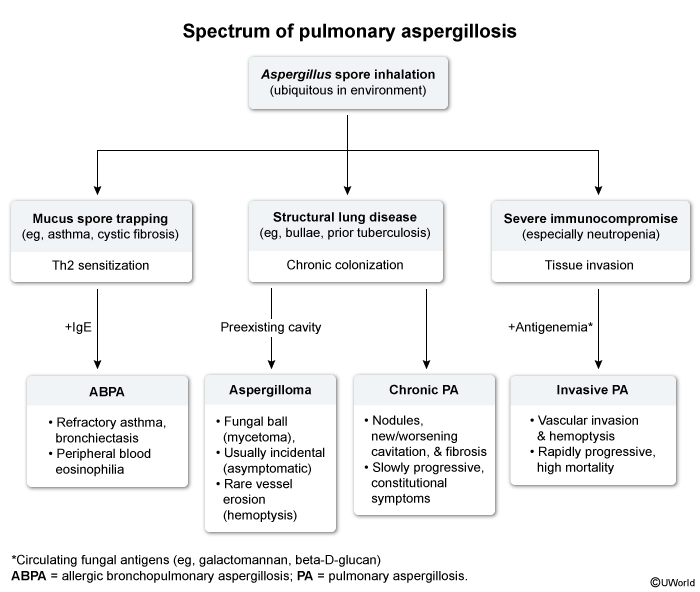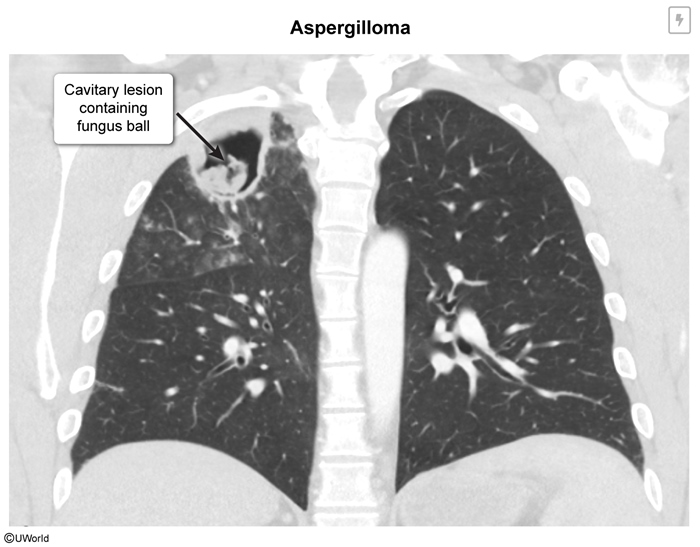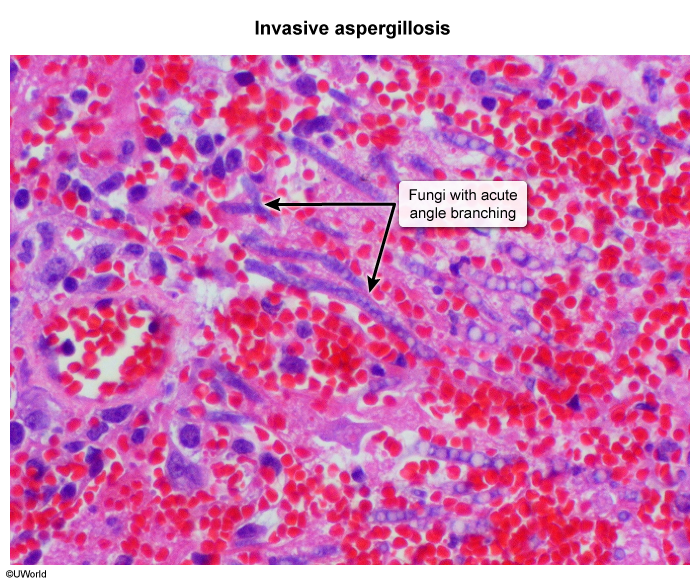Aspergillosis
Article Sections
Pathophysiology and risk factors
Aspergillosis refers to a family of lung diseases caused by Aspergillus species (mostly A fumigatus). This environmental fungus is ubiquitous and found in soil, organic matter, and air. Aspergillus spores (conidia) are constantly inhaled (~1000 spores daily). Normally, they are cleared by the lungs' mucociliary escalator and never cause disease. However, in susceptible individuals, 4 major manifestations can develop:
- Allergic bronchopulmonary aspergillosis (ABPA) develops when spores trapped in bronchial mucus develop TH2 sensitization. Patients with underlying asthma and/or mucostasis (eg, bronchiectasis, cystic fibrosis) are at highest risk.
- (Simple) aspergilloma is a fungus ball formed when spores colonize a preexisting lung cavity and then germinate into a mass of hyphae. Conditions that lead to the formation of lung cavities (eg, previous tuberculosis, lung surgery, emphysema bleb) set the stage for aspergilloma.
Continue Learning with UWorld
Get the full Aspergillosis article plus rich visuals, real-world cases, and in-depth insights from medical experts, all available through the UWorld Medical Library.
Figures

Figure 1
Images

Image 1

Image 2